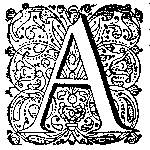The Liminal, The Licentious, and the Illicit
Pirate Portraits in Alexandre-Olivier Exquemelin’s De Americaense Zee-Rovers
DOI:
https://doi.org/10.51750/emlc13660Keywords:
piracy, print culture, Atlantic history, naval portraitsAbstract
Despite the political, economic, social, and cultural importance of piracy, images of Atlantic piracy and privateering are rarely represented in seventeenth century Dutch visual culture. The illustrations created by Herman Padtbrugge for A.O. Exquemelin’s De Americaensche Zee-Roovers are a rare exception. The bestselling book, with its first-hand account of life as a buccaneer, was widely distributed throughout Europe and formed the basis of both our historical understanding of Caribbean piracy and its place in our poetic imagination. The transient distinction between piracy and privateering is linked to the cultural perception of the high seas as a freer, more open space, despite its increasing regulation and militarization. This article explores how the pictorial conventions used in the portrayal of pirates reflect their role as liminal figures – constantly shifting between licit and illicit, Old and New Worlds, and national affiliations – in the multicultural, rapidly evolving, and violent colonial context. Padtbrugge’s portraits borrow the visual language of the cult of naval heroes, only altering a few iconographical markers to indicate on which side of the law the subject and his actions fell upon. The minor nature of these differences reflects how heroic privateering in the service of national interests and criminal piracy in service of the individual were two sides of the same coin, shedding light on the legal paradox of the state-sanctioned right to pillage.
Downloads

Published
Issue
Section
License
Copyright (c) 2024 Margaux Shraiman

This work is licensed under a Creative Commons Attribution-NonCommercial 4.0 International License.





